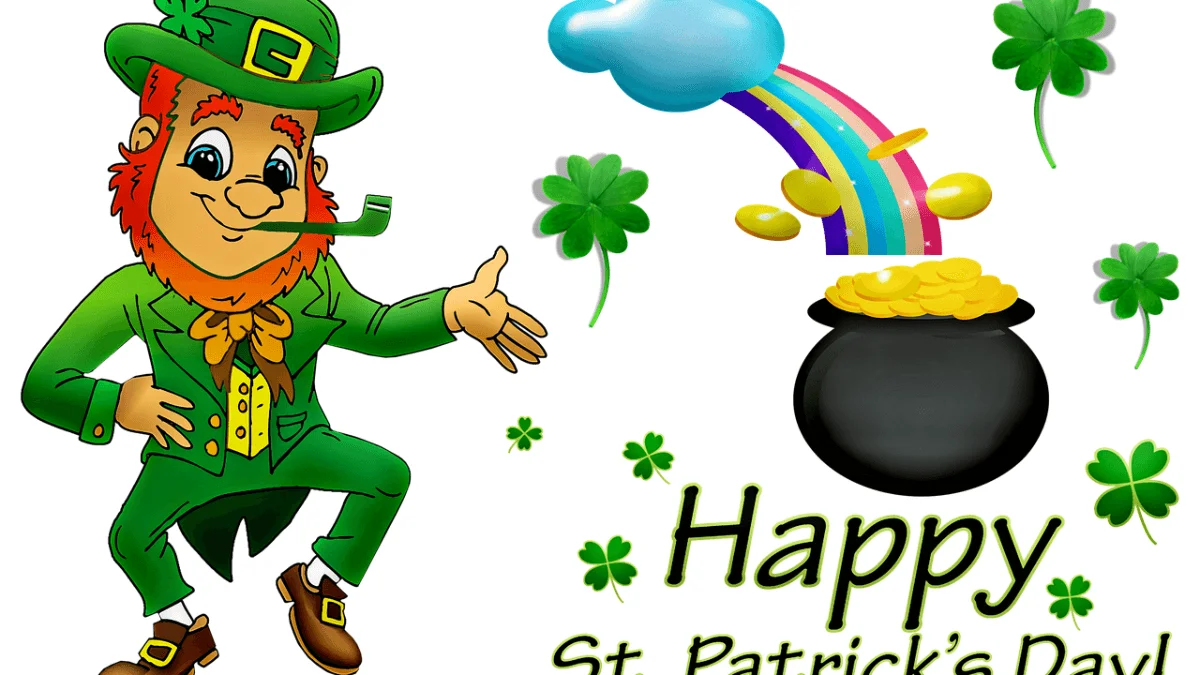St. Patrick’s Day, celebrated every year on March 17th, is a cultural and religious holiday originating from Ireland. It commemorates St. Patrick, the patron saint of Ireland, and the arrival of Christianity in Ireland.
One of the most enduring symbols of this celebration is the leprechaun, a mythical creature from Irish folklore. This post aims to explore the significance of St. Patrick’s Day in Irish culture and the role of the leprechaun in these celebrations.
The Legend of the Leprechaun
Leprechauns are mythical creatures in Irish folklore. They are often depicted as small, bearded men wearing a coat and hats, who partake in mischief. The origin of the leprechaun legend is believed to date back to the 8th century, rooted in Irish fairy tales.
Over time, the depiction of leprechauns has evolved, with modern representations often showing them wearing green, in connection with St. Patrick’s Day.
St. Patrick’s Day and the Leprechaun
The association of leprechauns with St. Patrick’s Day likely stems from their status as an Irish folklore symbol. On St. Patrick’s Day,
it is common for people to wear green, participate in parades, and make references to the luck of the Irish, often symbolized by leprechauns.
The tradition of looking for leprechauns, with the promise of a pot of gold at the end of the rainbow, adds an element of fun and magic to the celebrations.
Leprechauns in Popular Culture
Leprechauns have been widely represented in popular culture, including films, books, and media.
These representations have played a significant role in shaping public perception of leprechauns.
From being the mascots of breakfast cereals to starring in horror and comedy movies, leprechauns have become recognizable and beloved figures worldwide.
Fun Leprechaun Facts
While they are often associated with mischief, leprechauns are also known for their love of music and dance. They are skilled musicians, playing the tin whistle, the fiddle, and even the Irish harp. Leprechauns are also known for their shoemaking skills.
According to the folklore, you can often hear a leprechaun if he is nearby, busy hammering away at a shoe.
One of the most popular myths about leprechauns is their hidden pots of gold. It is said that leprechauns hide their pots of gold at the end of a rainbow, and finding this treasure is often the main goal of those who try to catch a leprechaun.

The Leprechaun and St. Patrick’s Day Traditions
St. Patrick’s Day is filled with traditions that have been passed down through generations. One of the most popular traditions is the wearing of green attire, often accompanied by festive accessories like a leprechaun hat or beard.
This tradition is linked to the leprechaun, whose favorite color is said to be green.
Another popular tradition is the making and setting of leprechaun traps by children. These traps, often made using everyday household items, are set up the night before St. Patrick’s Day in the hope of catching a leprechaun and securing his pot of gold.
While no one has reported catching a real leprechaun yet, this tradition adds a layer of excitement and magic to the celebrations.
Leprechauns Around the World
While leprechauns are an Irish legend, their popularity has spread worldwide, particularly in countries that celebrate St. Patrick’s Day.
From the United States to Australia, it’s not uncommon to see people dressed as leprechauns during St. Patrick’s Day parades and celebrations. Some cities even hold contests for the best leprechaun costume!
Conclusion
Leprechauns have become a significant part of St. Patrick’s Day celebrations and Irish culture. Their enduring appeal lies in their mischief, their mythology, and the sense of fun and magic they bring to St. Patrick’s Day. As we celebrate this day, let’s remember and appreciate the rich folklore and cultural significance of these mythical creatures.
The leprechaun, with its rich history and folklore, plays a significant role in St. Patrick’s Day celebrations. Whether it’s through wearing green, setting leprechaun traps, or simply enjoying the festive atmosphere, the leprechaun adds a touch of magic and whimsy to this beloved holiday.
FAQs
A leprechaun is a mythical creature from Irish folklore. They are often depicted as small, bearded men, partaking in mischief.
Leprechauns are associated with St. Patrick’s Day because they both trace their history to Ireland. There is no direct connection between St. Patrick’s and leprechaun apart from that they are both symbols of Ireland.
The modern-day depiction of a St. Patrick’s Day leprechaun is often described as a bearded, little old man about three feet tall, dressed in green, with shiny buckled shoes, a hat, and maybe smoking a pipe.
Leprechauns are often associated with the profession of shoemaking.
It is said that leprechauns hide their pots of gold at the end of a rainbow, and finding this treasure is often the main goal of those who try to catch a leprechaun.
According to Irish legends, if you happen to capture a leprechaun, you can barter his freedom for his treasure and he will grant you three wishes provided you let him go.
Leprechauns have been widely represented in popular culture, including films, books, and media. These representations have played a significant role in shaping public perception of leprechauns.

